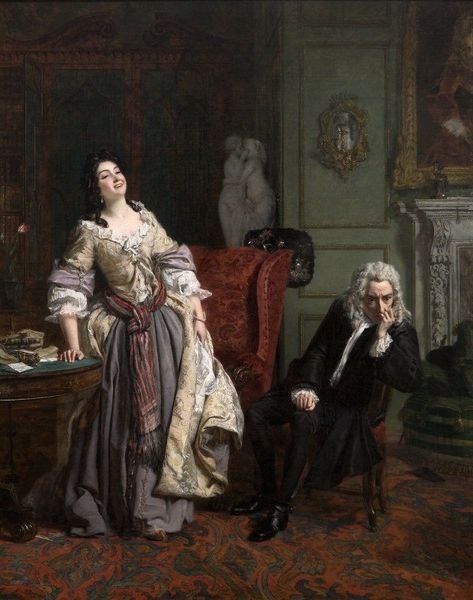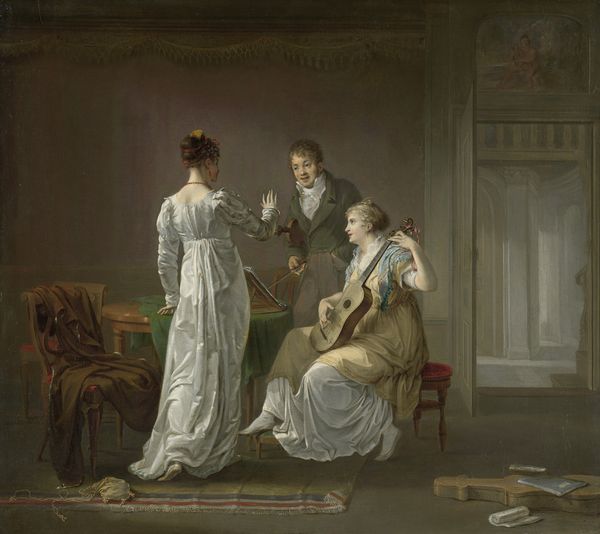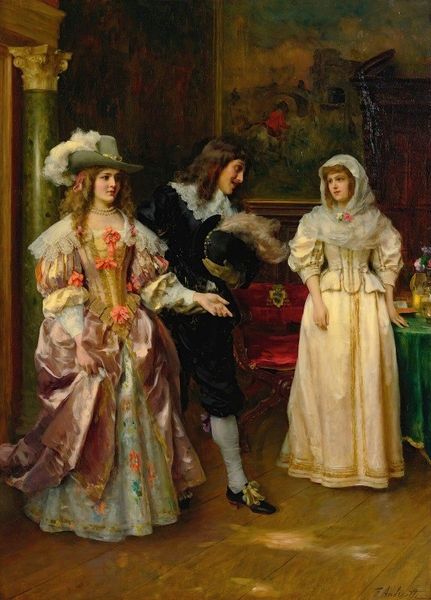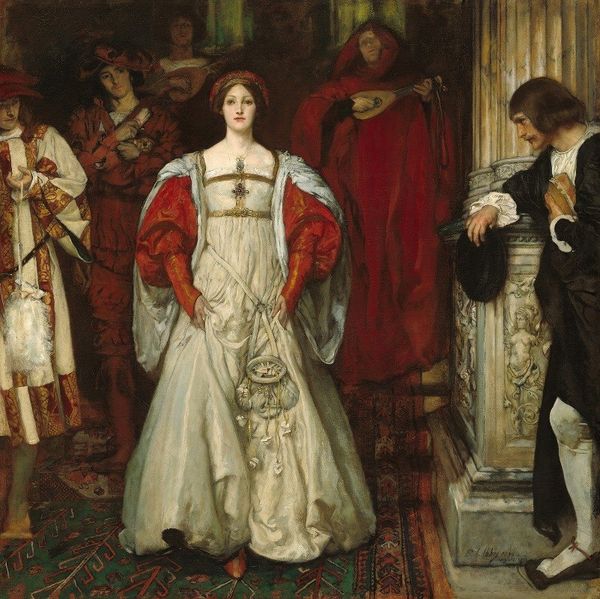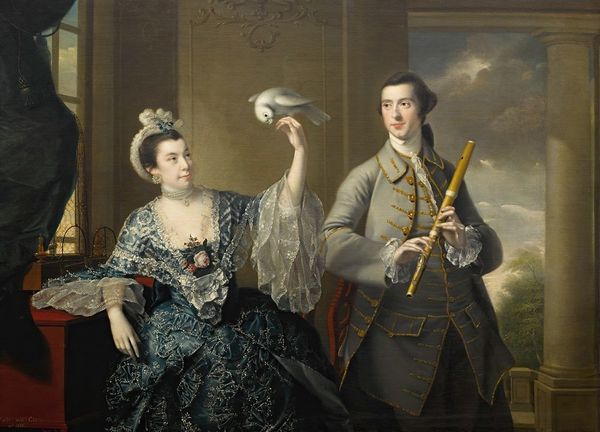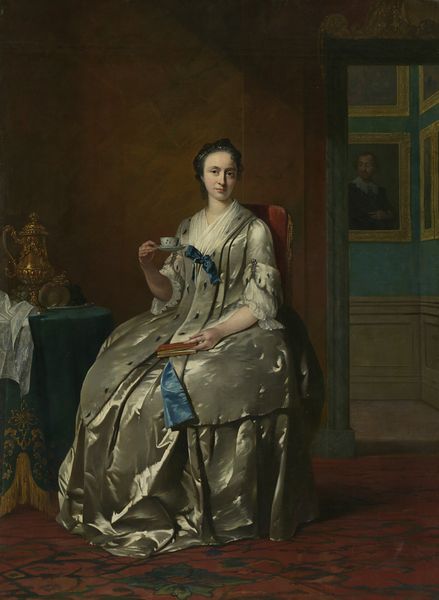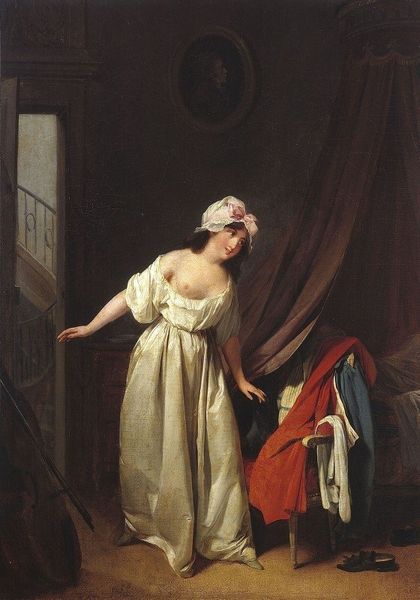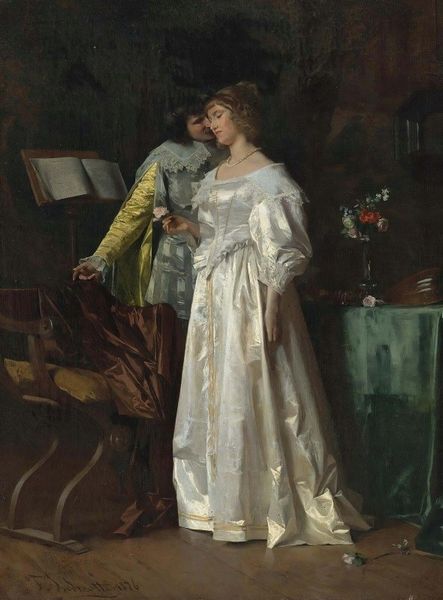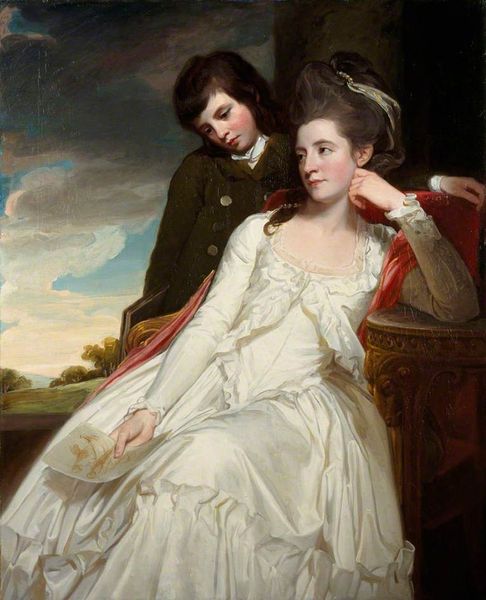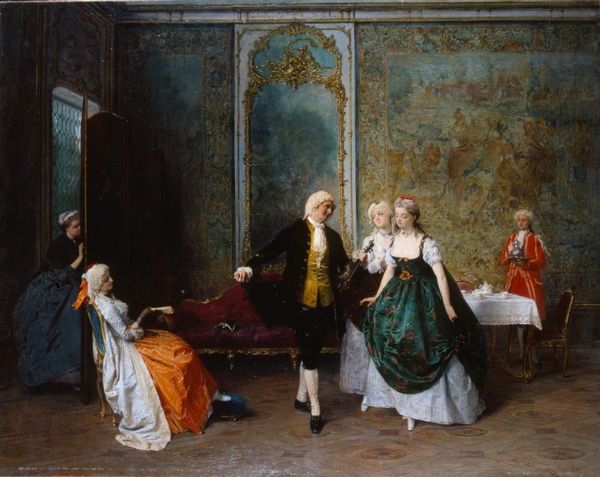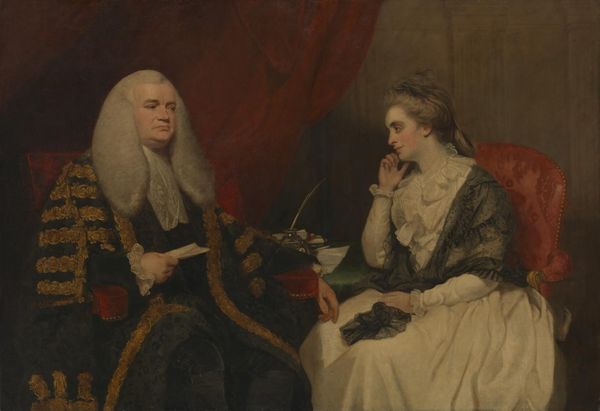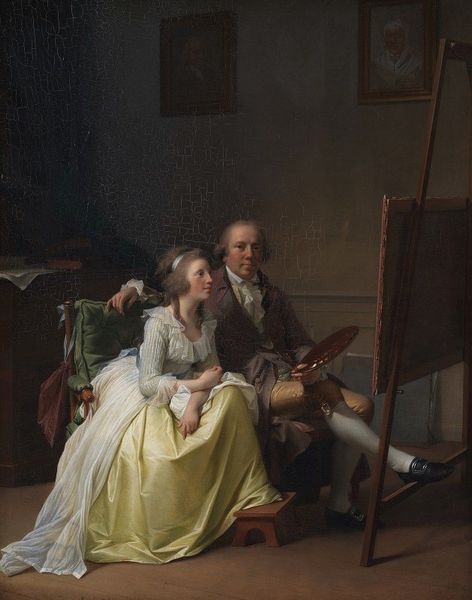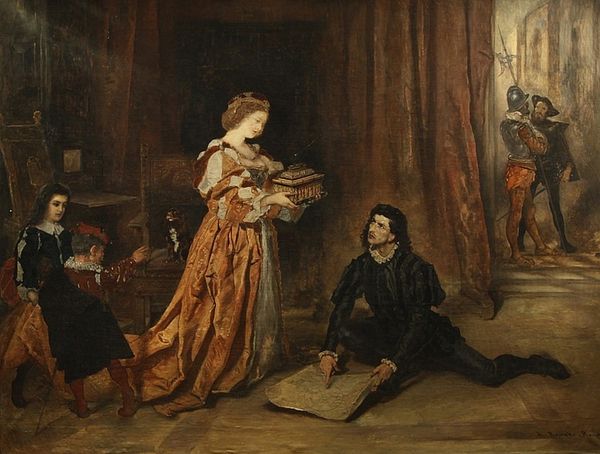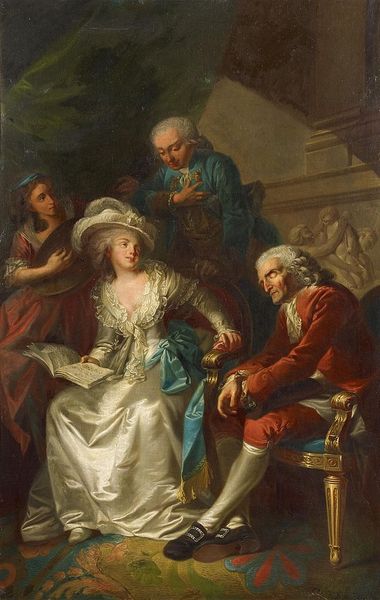
Dimensions: height 41.1 cm, width 31.4 cm, thickness 0.9 cm, depth 9 cm
Copyright: Rijks Museum: Open Domain
Curator: Here we have Aimé Gabriel Adolphe Bourgoin's "The Dance," an oil on canvas completed around 1870. It offers us a glimpse into a bygone era, rich with romantic undertones and historical fashion. Editor: Oh, that violin player, doesn't he think he's charming! It's the 19th century equivalent of a really bad pick-up artist. Though, I confess, I am intrigued. It feels almost staged, as though the couple are practicing steps in a theatre piece, an odd stillness alongside the obvious subject of movement. Curator: Staged, indeed. Bourgoin, known for genre and history paintings, often constructed scenes that echoed popular social activities but were also deeply embedded in the Romantic style. The idealized figures, the dramatic lighting, all catered to bourgeois tastes eager for narratives of refinement. Editor: That shimmering dress is really working overtime. All that white, a pristine slate to ward off something unseen? Or maybe she's hoping her admirer might also make it her wedding dress! The musician himself seems a bit drab by comparison, resigned somehow. What do you think of the relationship dynamic depicted? Curator: Social power in the 19th century was meticulously displayed through costuming, behavior, and these constructed displays of leisure. Note how the interior almost disappears. It directs our entire focus towards the couple. The lack of overt context does, though, prompt viewers to impose their interpretations. Editor: Context, sure, but look at her hand almost vanishing beneath that ridiculous, beautiful train. To me it is that tension which tells the story - what disappears, what stays hidden. The dance between visible status and vulnerable inner states, a step-by-step narrative where things are both concealed and revealed. Curator: Your reflections are fascinating. They challenge the way that we, even as modern viewers, place ourselves within these crafted scenarios. Art historical analysis invites speculation on its purpose within its era; did "The Dance" encourage social aspirations or did it simply provide an aesthetic diversion? Editor: I don't know the answer for others, but as an artist I find myself responding less to that kind of broad historical questioning. I rather see that human impulse behind the whole endeavour. A private space where stories like these come alive, maybe for the painter himself.
Comments
No comments
Be the first to comment and join the conversation on the ultimate creative platform.
